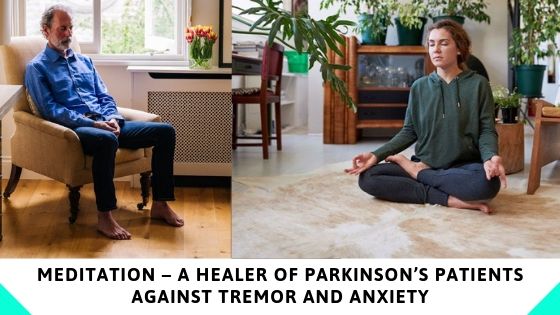The body of a human being is made up of lots of components – bones, muscles, organs, blood, tissues, cells, nerves, fluids, etc. Among them, nerves are one such component which is unimaginably responsible for the well being and normalcy of a person. Lakhs of nerves are associated with each and every part of the body and each one of them has different and unique characteristics and are responsible for a particular work. The most important organ of the human body is the brain. It is considered as the center of the nervous system. It actually regulates our body and its activities. The brain is divided into several parts and each part has distinct roles in regulating our body. One such part is called Midbrain. Midbrain has several cells, tissues, nuclei, etc. One such group of nuclei forms a structure called basal ganglia or more specifically as Substantia Nigra. This is the part which is solely responsible for the movements and actions of the human body. Today we are writing this article related to
Substantia Nigra has neurons whose one of the main characteristics is to generate and supply dopamine to other nerve cells.
Dopamine is a chemical neurotransmitter that is being released by the nerve cell or neurons, which then send signals to other nerve cells and hence it relays the information between the brain and rest of the body.
When such dopamine-producing neurons become dead, there comes a disorder called Parkinson’s disease.
What is Parkinson’s disease?
It is a neurodegenerative disorder caused by the death of dopamine-producing neurons in the brain, resulting in the dysfunction of the body parts. When the effect of this disorder is high in the body, it causes several symptoms like shaking/tremors, anxiety, rigidity, difficulty in walking, slowness in movement, even Dementia as well.
Most of the patients don’t know sometimes how to deal with the effects of this disease but certainly, it can be cured through several means like medication, surgery, meditation, etc.
Let’s understand the Neuro-Psychological Effects of Parkinson’s disease
Many symptoms like anxiety, depression, dementia are already mentioned in the above conversation, but do we know the exact effects that happen out of these?
No, Na………………………………………..
One of the most vital and inevitable effects are the psychological effects that almost every patient has to bear along with their disease.
Many often you can see that an affected person is getting hyper with a small reason or sometimes they are trying to hide their symptoms in public places. Why does it happen?
Because when I am a self-dependent person and never looked back for any sought of help from anyone throughout my life, if suddenly one day I get to know that I have to be dependent on somebody else for a minor reason it will definitely affect the stability of my mind. Don’t you think so?
Or in a public gathering, suppose if a person is shaking his hand uncontrollably and everybody is staring at him, how will he feel?
He will surely lose his confidence and will try to hide his problem in order to avoid public bullying or sympathy. Right?
So all these can break the self-confidence of any patient and thus he or she might develop anxiety in themselves.
Anxiety
Anxiety is nothing but a sense of fear, nervousness. It may cause minor changes in your body like sweating, the rise of heartbeat, etc. It changes with the situation, but some people can smartly deal with it some cannot. But it is a temporary phase of a patient’s life. You can definitely overcome this phase through several means.
Depression
It is also another one such effect which can lead you to severity. This has an impact on both mind and body. When you are severely depressed, even sometimes your treatment may not be effective on you because of your depression level. So our suggestion to you is don’t be depressed and do not think too much about your disease.
Treatments:
Both medication and surgery can be given to an affected patient depending on the progress and stage of the disorder the latter is having. Medications can range through a variety of different medical treatments, one promising medical venture for treatments into many different illnesses, including anxiety, depression, PTSD, and perhaps even Parkinson’s, is the use of CBD (Cannabidiol), which can take many different forms such as this water soluble CBD. These can make it a lot easier for patients to take. CBD has shown promising results for the prior stated disorders or illnesses. It then makes it even more advantageous to think patients are then able to find this medication for cheaper prices when researching the likes of this Medterra coupon or other similar discount coupons for different CBD products that can be found on the market. This means that patients can get the medical treatments they need without breaking the bank for a medication that will actually help and aid them.
Meditation is one of the most wonderful processes after medication and DBS surgery for this disease. Don’t you believe me?
Due to Parkinson’s disease, the patient feels anxiety, stress, fatigue, sleep disturbances, mood swings, depression, etc. Let’s start discussing on how meditation can help us in dealing side effects of Parkinson’s disease.
Meditation as a tool to defend the Side effects of Parkinson’s Disease:
Meditation is a practice or procedure where a person uses a specific technique like mindfulness or focusing his mind on a particular object, thought, etc. to achieve a mentally clear and emotionally calm, quiet and peaceful state of mind. This can heal the inner soul, resulting in a stage where one should live without having any stress, tension, anxiety, depression, etc.
Mindfulness Meditation
This is a type of meditation where a practitioner learns how to remain aware and patient in the situation where he is present and react in the same without overwhelmed by its ongoing process or overtly reactive to it.
As per the research, this is one of the best meditation for PD patients and by practicing this one can surely overcome the drawbacks of PD to some extent.
Mindfulness meditation is a form which can be practiced at any point of time in any situation.
Suppose you have gone to a market to buy things, you can simply do this mindfulness meditation by calmly noticing the different products present in the market, how people are going to the shops to buy stuff, what are the different smells present in the air of the market, the types of sound present in it and so on. Like example, in a fish market, you can experience pungent fishy smells, different types of fishes to lots of different sounds of cutting the fishes with knives to people talking to each other and etc.
How to do Mindfulness Meditation
1) Find the right place. First, take a good spot in your home which is free from noise. Leave the lights on or sit in natural light. initially, you can start with short time, slowly increase the time.
2) Take your seat: You can sit on a chair, a meditation cushion or park bench – always find a stable seat.
3) Observe your leg: If you are sitting on a chair, it’s good if bottoms of your feet are touching the floor. If it is a cushion on the floor, cross your legs comfortably.
4) Straighten your upper body but don’t stiffen: you will notice that the spine has natural curvature. Keep like this.
5) Let your hands drop onto the tops of your legs
6) You may let your eyelids lower.
7) Just relax. Bring your attention to your breath or sensations in your body. ( You may see the pain in the leg or any part of your body, just feel the sensation.)
8) Feel the sensation of breathing, how air moving through your nose, or the rising and falling of your belly. Choose your focal point and with each breath, you can note mentally “breathing in” and “breathing out”
9) Your attention will leave the breath and wander to other places. You please do not worry and do not need to block or eliminate thinking. when you observe of your mind wandering – in a few seconds, a minute, five minutes, just gently return your attention to the breath.
10) You may find your mind wandering constantly, it’s normal. Instead of wrestling with those thoughts as much, practice observing without needing to react. Just sit and pay attention. Feel your mind’s thought and accept it without judging the thoughts. Slowly divert your attention on your breath (breathing in and breathing out)
11) When you are ready, gently lift your gaze ( if your eyes are closed and open them). Take a moment and notice any sounds in the environment. Notice how your body feels right now. Notice your thoughts and emotions. Pausing for a moment, decide how you’d like to continue on with your day.
Advantages of Mindfulness Meditation
• It can reduce negative emotions hence can make you concentrate on right and positive thinking
• It actually improves focus and thus makes you more calm and stable
• It may lead to less emotional stress and anxiety in you
• It may also lead a better sound sleep, which is actually very much needed for PD patients.
On a cold winter evening, six women and two men sat in silence in an office near Harvard Square, practicing mindfulness meditation. Sitting upright, eyes closed, palms resting on their laps, feet flat on the floor, they listened as course instructor Suzanne Westbrook guided them to focus on the present by paying attention to their bodily sensations, thoughts, emotions, and especially their breath. Our mind wanders all the time, either reviewing the past or planning for the future,” said Westbrook, who before retiring last June was an internal-medicine doctor caring for Harvard students. “Mindfulness teaches you the skill of paying attention to the present by noticing when your mind wanders off. Come back to your breath. It’s a place where we can rest and settle our minds.” By Havard.edu. Know more
Open Awareness Meditation
Open awareness meditation or open-monitoring meditation is a type of meditation where your attention is open to each and every kind of happenings around you. You can perceive all the experiences as they happen without being judgmental of them. Open Awareness Meditation has a wide-angle which one can experience. Suppose if you have gone to a seaside you can concentrate your focus on length and depth of the sea, its different waves and their different sizes, the tidal effects on the waves, etc. on a broader level.
Mindfulness is a mixture of open awareness and concentrative meditation where both focusing on a single object (concentrative meditation) and focusing on different objects or happenings are there. It is a balanced form of meditation merging the two.
Advantages of Open Awareness Meditation:
- It actually increases flexibility, tolerance, and understanding of oneself
- It helps improve your self-esteem and confidence in yourself
• You can more rely on your realistic expectations and on others also
Kundalini Yoga
It is a physical activity form of meditation that bends movements with deep breathing and chanting mantras.
Advantages of Kundalini Yoga:
- It improves physical strength, hence can surely help in mobility errors of PD patients
- It helps in curing mental illnesses like stress, anxiety, depression, etc.
The rule for practicing Meditation for Parkinson’s disease
- The ideal time to practice meditation in the morning. If Parkinson’s patient is on-phase in the morning, they can practice.
- Try to do at empty stomach.
- Practice in a quiet place.
- While practicing time, be comfortable (such as comfortable dress, seat, not excessive light )
- Sit at a comfortable posture
- This is another tip for easy meditation. Take a few deep breaths before the meditation is always a good idea. It helps to steady the rhythm of the breath.
- Meditation is extremely relaxation process. You can choose any time the hours of sunrise and sunset.
- This is another tip for easy meditation. Take a few deep breaths before the meditation is always a good idea. It helps to steady the rhythm of the breath.
- Don’t try to clean your mind: People have a misconception for meditation that they should not think any negative or other unnecessary thought during practicing meditation. Only they need to focus on something. Am I right?? Initially, it is impossible. You should know that when you will practice meditation, much different thought will come, do not try to eliminate from the mind, rather observe all the thoughts and accept it nicely, gradually you will feel very relax, slowly you will shift your attention on your breathing process. If you will force to stop your thoughts, you can’t do meditation, As a result, you feel dissatisfied.
- Be Consistent: It doesn’t matter how small you start, the most important thing is that you practice. Ideally, at the same time every day so you create a habit. Consistency is more important than time spent-better to meditate every day for five minutes than once a week for an hour.
- Don’t Judge: Whatever thought will come, just accept and enjoy. No need to judge. So stop judging yourself for being human. Practice breathing exercises.
Practicing Meditation as a challenge to PD patient:
Meditation practice can be a big challenge to Parkinson’s Disease patients as the disease is solely associated with motor immobility of the body.
The first step of meditation is to calm your body by focusing on your mind.
Undoubtedly, this is an obstacle to any PD patient. To overcome these obstacles you can try motor activities like cycling, gardening, yoga to flex your muscles and motors or the affected part and then concentrate on focused meditation. If a patient decides to go down the gardening route, they may want to see what type of equipment they can get to make it easier for them to do what needs to be done. Family members may want to look into one of those garden metal buildings Connecticut storage solutions, or one closer to their location, so they are able to get their equipment all in one place, giving ease of access.
Focused breathwork is another way in which you will have to focus your full attention on the breath. But here comes the second obstacle where you cannot concentrate on focused breathing due to motor immobility.
How Meditation helps in curing Parkinson’s Disease?
Meditation provides treatment of Parkinson’s Disease on a number of levels. Note: Practice meditation On-Phase time.
Firstly, it is proven through several kinds of research that meditation activates the autonomic functioning region of the brain and thus it balances the autonomic nervous system that is associated with the functions like breathing digestion, etc.
Secondly, meditation helps to cleanse our body from any harmful toxins that are being stored in the body cells. It is a powerful stress management tool and is a recommended diagnosis of any kind of mental problem. It helps to repair brain cells to some extent.
Thirdly, meditation helps to increase the secretion and productivity of dopamine in the brain cells – the most important factor to defend Parkinson’s disease in the body.
So the matter of the fact is this, if you are PD patient you can definitely try meditation make as a habit and I am sure, you will be benefitted by the outcomes of it to a certain level.







